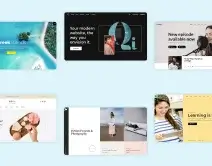
Blog Post Structure and Format: A Comprehensive Guide
Written By: Alison B. Hurt
Published On: Oct 11,2023
Introduction
In the digital age, the art of writing has evolved, and one of its most prominent forms is the blog post. Whether you're a seasoned essay writer or a novice just dipping your toes into the world of essay writing, understanding the structure and format of a blog post is essential. In this guide, we'll explore how to write a blog post effectively, using various essay formats as reference points. So, whether you're aiming for an academic essay, a narrative essay, a descriptive essay, an informative essay, or an argumentative essay, this post has got you covered.
The Foundation: Thesis Statement
Much like an academic essay, a blog post should have a clear and concise thesis statement. This statement serves as the foundation of your post, setting the direction and purpose. It's the central idea that you'll explore and support throughout your writing.
For instance, if you're writing an informative essay on the benefits of reading, your thesis statement might be: "Reading enriches the mind and enhances one's knowledge base." This statement will guide your content and keep it focused on the topic.
Understanding Your Audience
Before you start writing, consider your target audience. Are you writing for academics who are well-versed in your subject matter, or are you aiming for a broader, general readership? This decision will influence your tone, language, and approach.
- Academic Essay: If your audience is academic, you can use specialized terminology and dive deep into the subject matter, assuming your readers have prior knowledge.
- Narrative Essay: For a more personal touch, a narrative blog post can engage your readers emotionally. Share anecdotes or experiences related to your topic to connect with them on a human level.
- Descriptive Essay: Paint a vivid picture with your words, appealing to the reader's senses. Describe your subject in detail, creating a sensory experience for your audience.
Structuring Your Blog Post
The structure of your blog post is crucial for readability and engagement. Here's a basic outline that can be adapted to different essay formats:
Introduction
Your introduction should grab your readers' attention and provide a brief overview of what your blog post is about. It's your chance to make a compelling first impression. Hook your readers with a thought-provoking question, an interesting fact, or a captivating story related to your topic.
Body
The body of your blog post is where you'll delve into the details. Depending on your chosen essay format, this is where you'll provide information, present arguments, share experiences, or describe your subject. Use clear and concise paragraphs to organize your content logically.
- Argumentative Essay: Present your main arguments and support them with evidence and examples. Address counterarguments to strengthen your position.
- Persuasive Essay: Convince your readers to adopt a particular viewpoint or take a specific action. Use persuasive techniques like emotional appeals, statistics, and expert opinions.
Conclusion
Your conclusion should summarize the key points you've discussed in your blog post. Restate your thesis statement and leave your readers with a lasting impression or a call to action. Encourage them to think or act differently based on the information you've provided.
Formatting Your Blog Post
Formatting plays a significant role in the readability of your blog post. Here are some formatting tips to consider:
- Use subheadings: Break your content into sections with descriptive subheadings. This makes it easier for readers to skim and find the information they're looking for.
- Short paragraphs: Keep paragraphs concise and to the point. Long blocks of text can be intimidating and may deter readers.
- Bulleted or numbered lists: Use lists to highlight key points or steps. Lists are visually appealing and can improve comprehension.
- Visual elements: Incorporate images, infographics, and videos to enhance your content. Visual elements break up the text and make the post more engaging.
Tools to Aid Your Writing
In the age of technology, there are numerous tools available to assist essay writers and bloggers. If you're looking for help with your writing process, consider the following:
- Essay Typer: Online tools like Essay Typer can help you generate content quickly. However, be cautious when using them, as they may not always provide high-quality results.
- Essay Writer Free: Some platforms offer free essay writing assistance. These tools can be useful for brainstorming ideas or generating initial drafts.
- Best Essay Writing Service: If you're seeking professional help, consider using the services of a reputable essay writing company. They can provide you with well-researched and polished blog posts tailored to your needs.
"Burn After Writing" - A Creative Approach
If you're feeling adventurous and want to try something different, consider the concept of "Burn After Writing." Inspired by the popular "Burn After Writing" book series, this approach involves writing raw and unfiltered content about your personal experiences, thoughts, and emotions. While it may not fit the traditional essay format, it can be a refreshing and authentic way to connect with your audience.
Conclusion
Writing a blog post is a versatile skill that can draw inspiration from various essay formats. Whether you're crafting an academic essay-style post or opting for a more creative and introspective approach like "Burn After Writing," understanding the structure and format is key to producing engaging and effective content. Remember to tailor your writing to your audience, use a clear thesis statement, and employ formatting techniques to make your blog post visually appealing. With the right approach and tools at your disposal, you can craft compelling blog posts that captivate and inform your readers. So, go ahead, put pen to paper (or fingers to keyboard), and start writing your next masterpiece.
Related Posts
Popular Article

A guide to write a rhetorical essay
12.1.2023

A guide to write a rhetorical essay
27.1.2023





